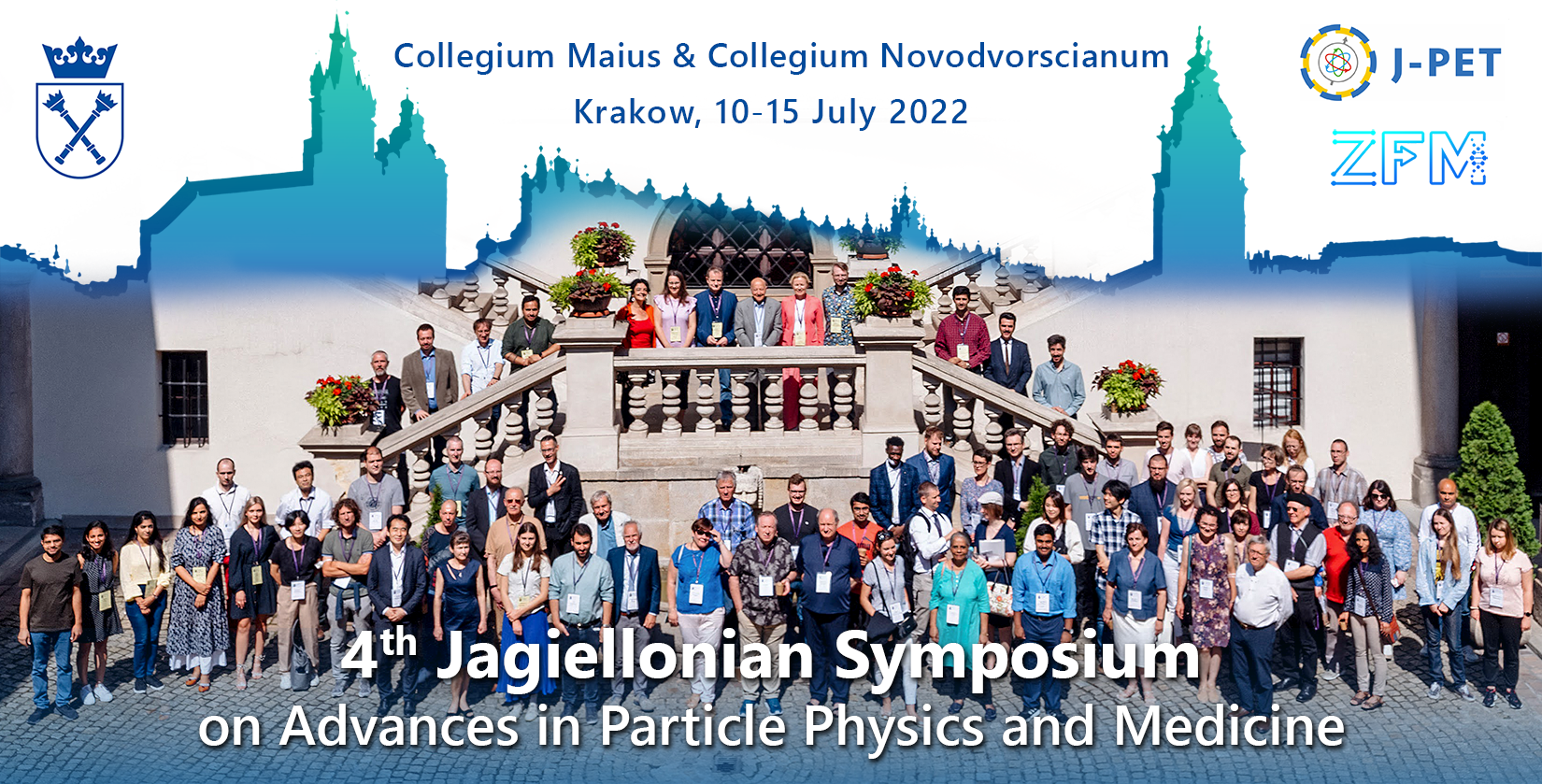Speaker
Description
Kavya Valsan Eliyan, Juhi Raj, On Behalf of the J-PET Collaboration Jagiellonian University.
Faculty of Physics, Astronomy and Applied Computer Science, Jagiellonian University, Kraków, Poland.
Theranostics Center, Jagiellonian University, Kraków, Poland.
Email: kavya.eliyan@doctoral.uj.edu.pl, juhi.raj@doctoral.uj.edu.pl
Interaction between electron-positron pair leads to direct annihilation into photons or creation of a bound state called Positronium. Positronium is the lightest purely leptonic object decaying into photons [1-3]. Positronium atom can be formed in two states based on the spin alignment of its constituting particles, Singlet state (1S0 -para-Positronium (p-Ps) and Triplet state (3S1- ortho-Positronium (o-Ps). Constrained by conservation laws, the o-Ps annihilate into odd number of photons (o-Ps → 3γ, where γ = 1, 2, …), while the p-Ps decay into an even number of photons (p-Ps → 2γ, where γ – 1,2, 3, ...) [4,5]. As an atom bound by a central potential, it is a parity eigenstate, and as an atom built out of an electron and an anti-electron, it is an eigenstate of the charge conjugation operator [1]. Therefore, the positronium is a unique laboratory to study CP discrete symmetry involving correlations of photons momenta originating form o-Ps annihilation [6]. The Standard Model predicts that the photon–photon interaction and weak interactions will mimic the symmetry violation in the order of 10−9 and 10−13 respectively [6]. Violation of CP invariance in purely leptonic systems has never been seen so far [7]. The experimental limits on CP and CPT symmetry violation in the decays of o-Ps are set at the level of 10−3 [2,8].
In the year 2021, the limitations of the previous experiments were overcome by the J-PET detector due to its much higher granularity and improve the world result by a factor of three and reaches the statistical precision of 10−4. The reported result is the present best upper limit on the CP violation in the decay of ortho-Positronium, leaving us 5 orders of more statistical sensitivity to be explored in this aspect. J-PET detector is constructed of 192 polymer scintillators, where each scintillator is attached with photomultipliers at each end. 192 scintillators are arranged co-axially in three layers at 3 different radii 42.5 cm, 46.75 cm, 57.5 cm respectively. Positronium atom can be formed in the center of J-PET detector using the beta-emitter 22Na source placed inside a small chamber. The source is sandwiched between an aerogel material. Plastic scintillators offer high time and angular resolution. Time Over Threshold is adopted as a measure of energy deposition. The signals are measured by using the trigger-less data acquisition [9-12]. All of the previous investigations with Positronium, which tested the discrete symmetries, were based on symmetry odd operators constructed as the products of photons momenta (k⃗ i̇ ) and Positronium spin (S⃗ ̇ ) vectors [2-4,6]. This project describes an extended study using another proposed operator [4], taking advantages of properties of the 3 layered J-PET detector, which enables to determine the linear polarization direction of annihilation photons. Measurement of polarization direction of annihilation photons (511 keV) is a unique feature of the J-PET detector which allows the study of CP symmetry violation by determining the expectation values of the CP symmetry odd operator (ε⃗ i⋅.k⃗ j) where i ≠j). As a future prospect, the J-PET collaboration has developed a modular version of the J-PET detector to improve the detection efficiency of this measurement and provide larger statistics in a shorter duration of measurement time to improve the precision significantly.
ACKNOWLEDGEMENTS:
The author acknowledge support by the TEAM POIR.04.04.00-00-4204/17 program, the NCN grant no. 2021/42/A/ST2/00423 and the SciMat and qLife Priority Research Areas budget under the program Excellence Initiative - Research University at the Jagiellonian University.
References:
[1] M. Skalsey, J. Van House, Phys. Rev. Lett. 67, 1993 (1991).
[2] P. A. Vetter, S.J. Freedman, Phys. Rev. Lett. 91, 263401 (2003).
[3] T. Yamazaki, T. Namba, S. Asai, T. Kobayashi, Phys. Rev. Lett. 104, 083401 (2010).
[4] P. Moskal et al., Acta Phys. Polon. B 47, 509 (2016).
[5] E.Czerwinski et al., Acta Phys. Polon. B 48, 509 (2017).
[6] P. Moskal, A. Gajos, M. Mohammed, Nat. Commun. 12, 5658 (2021).
[7] V. A. Kostelecky and N. Russell, 2018 update to Rev. Mod. Phys. 83, 11 (2011).
[8] T. Yamazaki, T. Namba, S. Asai, T. Kobayashi, Phys. Rev. Lett. 104, 083401 (2010).
[9] M. Palka, Jour. Of Instr. 12, P08001 (2017)
[10] G. Korcyl et al., Acta Phys. Polon. B 47, 491 (2016).
[11] Sz. Niedzwiecki et al., Acta Phys. Polon. B 48, 1567 (2017).
[12] A. Gajos et al., Nucl. Instr. and Meth. A 819, 54 (2016).

